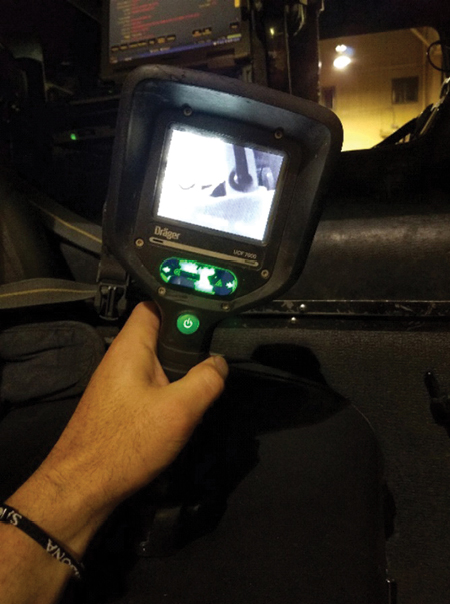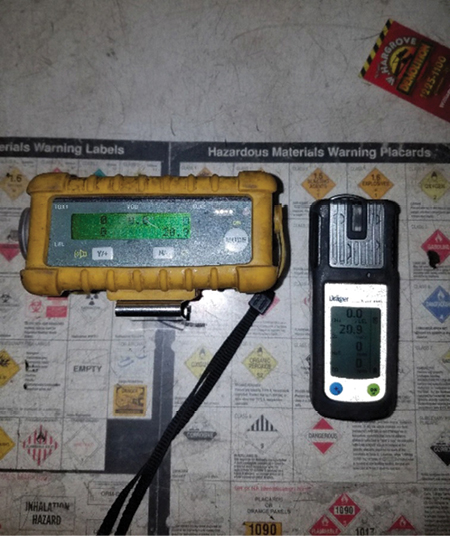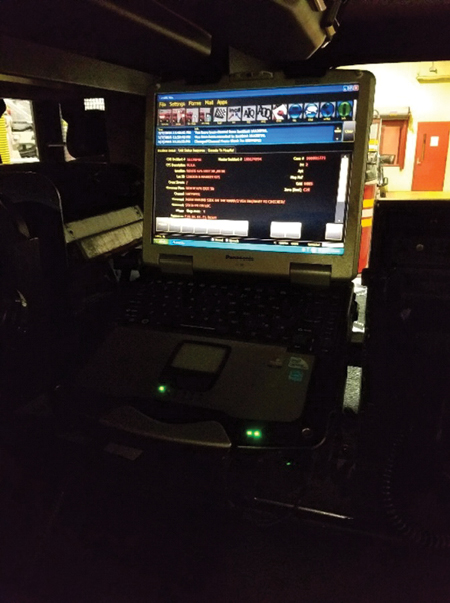By DANIEL STRATTON
Size-up is an action firefighters use to gather information when they are engaged in structural firefighting. It is then continued throughout the entire incident to identify concerns that will dictate their actions. The acronym COAL WAS WEALTH serves as a mental tool to identify factors; each letter represents a factor that you may need to consider and include in an incident action plan (IAP).
- Construction.
- Occupancy.
- Area.
- Life hazard.
- Water.
- Auxiliary systems.
- Street conditions.
- Weather.
- Exposures.
- Apparatus and personnel.
- Location.
- Time.
- Hazards.
This article discusses several ways to obtain size-up information. An operational size-up that begins on dispatch and continues through to the initial attack, overhaul, and the termination of the incident requires that the following resources be available to personnel to help them gather information.
Tools and Equipment
Onboard our rigs are tools and equipment that help us determine construction issues, the dynamics and by-products of combustion, and the location and extent of fire. A thermal imaging camera (TIC) (photo 1) enhances visibility. In a smoke-filled room, it can help determine room layout; identify fire spread in voids behind roofs, floors, and walls; and discover hazards such as holes in the floor and heated gases accumulating in the floor of the room where firefighters are. It can also locate a fire from the exterior when an officer conducts a 360° size-up of a wood-frame structure. Newer TIC models can also determine the temperature of fire gases, which helps anticipate flashovers or the structural failure of steel, which weakens at 1,000°F.

(1) A thermal imaging camera will help assess the location and extent of fire as well as identify floor layout under zero-visibility conditions. (Photos by Dave Hernandez.)
Verifying fire extension in voids is vital information that the incident commander (IC) needs when he is formulating an IAP. Also, using hand tools to open up structural coverings helps determine fire extension—a critical factor in fire attack. The officer in charge of the incident can put provisions in place to get ahead of the fire and determine collapse potential.
The use of power saws, particularly during roof operations, can help gather critical fireground information much in the way hand tools can for revising an IAP. To determine the extent of fire spreading horizontally in an attic or a cockloft, make a kerf cut or an inspection hole. A kerf cut is a single straight-line cut about the length of a circular saw blade. Be sure to perforate the roof decking to determine if by-products of combustion are present. An inspection cut is triangular; the three cuts should equal the length of the blade. Not only will this opening determine the location and extent of fire, but it can also help determine the roof’s construction type and the presence of multiple roofs.
Atmospheric meters (photo 2) help determine the presence of fire gases and give suppression forces the information they need to see if firefighters or civilians are in a hazardous atmosphere. For example, gases such as carbon monoxide and hydrogen cyanide are dangerous when breathed into the lungs. After overhaul, an investigator may enter the structure and take samples with an atmospheric meter to determine if it is safe to operate inside the structure without respiratory protection. In a large structure such as a high-rise building, gases could accumulate in remote areas. These meters also help fire crews determine if and when it is safe for civilians to return to their occupancies.
Using radios to receive the initial information on dispatch and monitor communications during the incident gives units the factors and resources they need to determine their actions for handling their specific tasks. For example, if you’re assigned rapid intervention, you can obtain the structure’s type by monitoring communications. Knowing that a building has masonry walls based on a size-up report will tip you off that you need a sledgehammer to breach a wall to reach a distressed firefighter.

(2) Atmospheric meters determine if the environment is safe for personnel to operate in without masks. You can also determine whether civilians can reoccupy a structure.
Reference Materials
Reference materials are the most useful way to gather information on factors to help create successful outcomes. It is crucial to document building information when conducting a preoperational size-up of a structure prior to an incident. Therefore, identify and evaluate an occupancy’s fire load, construction type, and other size-up factors, and include that information in your preplans and computer-aided dispatch systems. When you are en route to the fireground or on scene, personnel can refer to this information to form a strategy.

(3) Laptops aboard rigs can have access to preplan databases and aid in determining the severity of hazardous materials.
When hazardous materials are part of a fire scene, contamination and their effects on the environment are a concern. Personnel can refer to emergency response guides and National Institute for Occupational Safety and Health booklets to determine environment severity and what actions to take when confronted with such conditions. It is also beneficial to have on your apparatus laptop computers uploaded with the proper software to determine the outcome of any hazardous materials-related incident when responding to a fire (photo 3). In addition, obtaining material safety data sheets after a structure fire can also help you develop a strategy for similar responses in the future.
Last, having a good, accurate map better facilitates proper use of district streets; it should include hydrant and water main locations (including the pipe size) to estimate the available water flow as well as the location of static water supplies (i.e., lakes and ponds).
Personnel
Firefighters are the most valuable tool in the size-up process, and their senses are the main media needed for an ongoing assessment. They identify factors from the information retained and, as a result, formulate action. We can enhance these “tools” through continued education and training, two aspects of firefighting that should never cease.
One important sense is sight. For example, when stepping off a rig, be sure to scan the fire building in an “S”-like fashion and note the details of the structure such as flaws in construction, fire conditions, and access and egress points. Practice this whenever you walk into other structures so it can become second nature. Also be sure that a structure’s entire exterior perimeter and its roof are visibly assessed for conditions when units first arrive.
Your hearing is another important sense. Use your ears, particularly when searching a smoky structure, to determine the seat of the fire. A crackling sound may give you a clue as to the fire’s location. Everyone in the attack group must remain silent and still. Turn down radios or request radio silence to improve your hearing. This simple tactic may be all that you need to stop the progression of the fire.
The size-up process is an ongoing assessment meant to gather a great deal of information before and especially during the incident. Fire personnel must gather the critical factors that will contribute to a safe and successful outcome by all necessary means, which will ultimately enhance each and every size-up.
References
DANIEL STRATTON is a 31-year fire service veteran and a captain with the Camden City (NJ) Fire Department. He has experience as a volunteer and career firefighter and has served as a firefighter in the United States Army. He is an instructor for the Camden County (NJ) Emergency Training Center, the Salem County (NJ) Fire Academy, and Safety and Survival Training LLC. Stratton is a rescue specialist with NJ-TF1 and has a double associate degree in fire science. He is a contributing author to Fire Engineering and has taught several seminars at FDIC International.

